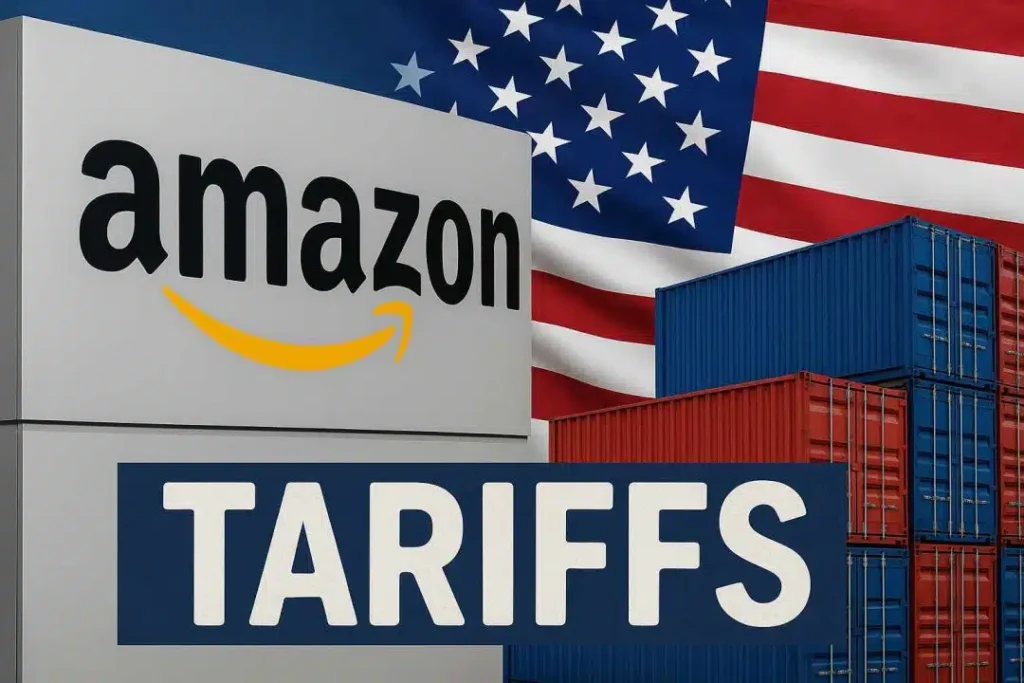Amazon found itself at the center of a heated political controversy this week following reports that the company planned to display the added costs of U.S. tariffs on its website. The proposal was seen as a politically charged move that would have far-reaching consequences for both consumers and the retail giant. However, after a backlash from the White House and political figures, Amazon has denied the claims, clarifying that the plan was never approved or implemented.
What Happened?
The controversy began when reports surfaced suggesting that Amazon had been considering adding a surcharge to products listed on its site to reflect the additional costs of tariffs imposed by the U.S. government, particularly in light of the ongoing trade war between the U.S. and China. The move was seen as a way to inform consumers about the true costs of products and services as affected by trade policies, potentially increasing transparency in pricing.
Supporters of the idea argued that it would show consumers the real-world consequences of the tariffs and allow them to understand how government policies are impacting their everyday lives. Some believed that this could help American buyers make more informed purchasing decisions by displaying a breakdown of how much they were paying as a result of tariffs.
The White House Response: Political Backlash
The proposal did not sit well with the White House, however. Political leaders from the Trump administration criticized the idea, accusing Amazon of using the tariff costs as a political tool. They argued that displaying tariff costs on Amazon’s site would unfairly stir up public dissent against trade policies and distract from broader economic goals.
The White House contended that Amazon’s move was politically motivated and would only fuel tensions surrounding trade relations. Amazon, under pressure, quickly issued a statement clarifying that while the Amazon Haul store had considered listing the added costs of tariffs on select products, the idea was never implemented, and the company would not move forward with such plans.

The Economic Debate: Transparency vs. Political Implications
The debate over Amazon’s potential tariff cost display has raised broader questions about transparency in pricing and the economic impact of tariffs. On one side, critics of the U.S. trade war argue that consumers are often unaware of the costs they bear as a result of tariffs, especially when companies absorb those costs rather than passing them directly to customers. This lack of transparency, some argue, prevents consumers from fully understanding the consequences of trade policies and the true cost of their purchases.
This move could have allowed Amazon’s customers to see the direct impact of tariffs on products, helping to highlight the real-world consequences of U.S. trade policies. For some, this was seen as an opportunity to empower consumers with better information, allowing them to connect the dots between government decisions and their personal spending.
On the other side, critics argue that Amazon’s move would have only complicated the shopping experience, potentially creating confusion and unnecessary tension in the retail marketplace. Adding tariffs to product pricing could have led to additional frustration for customers already dealing with economic uncertainty.
Amazon’s Position: Navigating Politics and Business
Despite the backlash, Amazon’s decision to retract the tariff surcharge plan seems to be a reflection of the company’s ongoing struggle to balance political pressures with its broader business goals. Amazon has long maintained a neutral stance in political matters, prioritizing growth and customer satisfaction over political allegiances. The decision to clarify its position indicates that Amazon wants to avoid becoming a political battleground while continuing to focus on consumer needs.
The Bigger Picture
This incident underscores the larger conversation about how trade policies, particularly tariffs, are affecting American consumers. While Amazon has decided not to move forward with adding surcharge costs to its products, the debate over the transparency of trade impacts continues to grow.
As companies like Amazon navigate the economic and political landscapes shaped by global trade policies, it’s clear that their decisions will continue to have an impact on consumer experiences. Whether it’s increasing transparency or avoiding politically charged stances, the way businesses handle these issues will play a key role in shaping public perception and business success.



